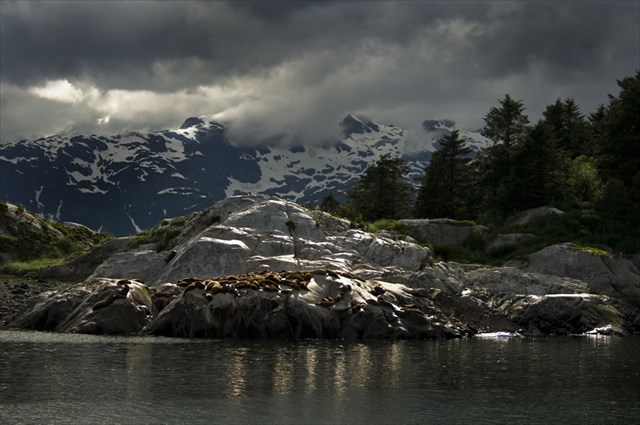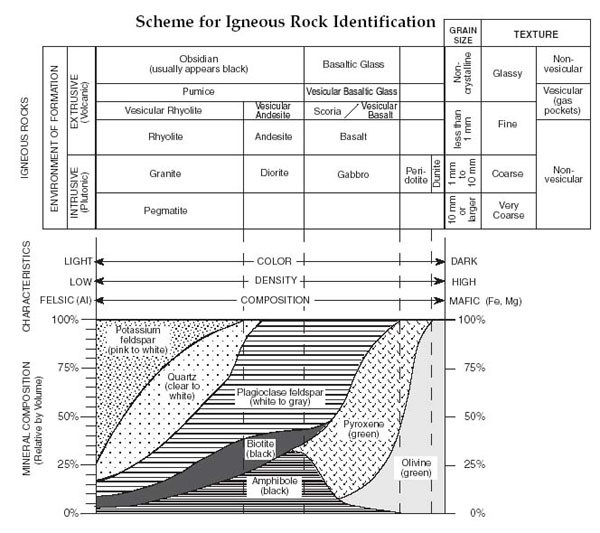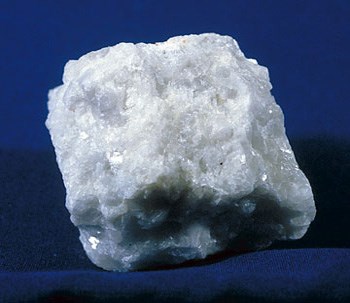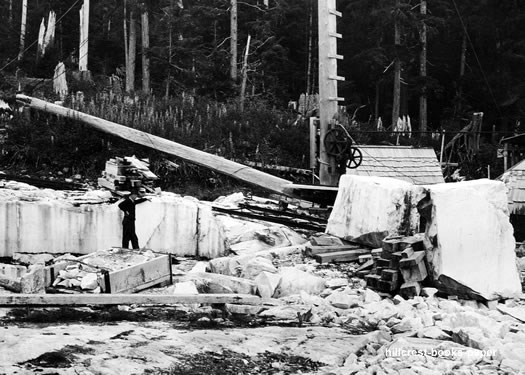
Marble Islands, Glacier Bay, Alaska
I am focusing only on Metamorphic rock changes for this Earth Cache. You can actually spot visible specimens along the shore on the “Marble Islands” with your binoculars.
To Log this Earth cache you must email me the answers to the following Questions:
- What mineral in Marble allows light to penetrate several millimeters into the stone ?
- Which metamorphism process makes Marble?
- As you sail by the Marble Islands, observe the marble pieces along the shore & tell me the approximate size? * Bonus Question: There is a natural phenomena happening on the southern most Marble Island and the Park Rangers have given it a nickname... What is the Nickname?
- Tell me the date and the name of the ship you sailed on.
- Where in Glacier Bay did a Quarry for Marble exist?
Much of this information was found on the cited resources listed at the end of this cache, the rest you will have had to be at GZ for the information!
The Rock Cycle:
Direct Quote from Brooklyn College Geology course credit cited at the end of this cache page:
“The Rock Cycle is a group of changes. Igneous, metamorphic and sedimentary rocks are subject to tectonic forces that will uplift these rocks to heights where they are subjected to the forces of weathering. After these rocks have been transformed to regolith then erosion will transport these sediments to places of deposition: rivers, lakes, seas, etc. Here these layers will be compacted and lithified. If these sedimentary rocks are subjected to heat and pressure then these sedimentary rocks will change their physical and chemical appearance making them metamorphic rocks. Metamorphic rocks are pressured and heated even further producing new rocks until these rocks become in contact with extreme heat where they will melt and became part of this magma. Eventually this magma will move up to the surface and crystallize either on the surface of the Earth (extrusive) or inside a cool magma chamber (intrusive) creating new igneous rocks, now these igneous rocks could be changed by heat and pressure becoming new metamorphic rocks, then this never ending cycle starts again.”


Raw Marble Specimen

![]()
El Capitan Marble Quarry, Prince of Wales Island, Alaska
The Glaciers over the ages have produced tremendous pressures on the surface area creating U-Shaped valleys and in some cases, metamorphic rocks.
Metamorphic Rocks
Direct Quote from Brooklyn College Geology course credit cited at the end of this cache page:
“Metamorphic rocks are the result of the transformation of a pre-existing rock type, the protolith, in a process called metamorphism, which means "change in form ".The protolith is subjected to heat and pressure (temperatures greater than 150 to 200 °C and pressures of 1500 bars) causing profound physical and/or chemical change. The protolith may be sedimentary rock, igneous rock or another older metamorphic rock. Metamorphic rocks make up a large part of the Earth's crust and are classified by texture and by chemical and mineral assemblage (metamorphic facies). They may be formed simply by being deep beneath the Earth's surface, subjected to high temperatures and the great pressure of the rock layers above. They can be formed by tectonic processes such as continental collisions which cause horizontal pressure, friction and distortion. They are also formed when rock is heated up by the intrusion of hot molten rock called magma from the Earth's interior.”
Marble Uses:
Sculpture
White marble has been prized for its use in sculptures since classical times. This preference has to do with its softness, which made it easier to carve, relative isotropy and homogeneity, and a relative resistance to shattering. Also, the low index of refraction of calcite allows light to penetrate several millimeters into the stone before being scattered out, resulting in the characteristic waxy look which gives "life" to marble sculptures of any kind, which is why many sculptors preferred and still prefer marble for sculpting.
Construction marble
Construction marble is a stone which is composed of calcite, dolomite or serpentine which is capable of taking a polish. More generally in construction, specifically the dimension stone trade, the term "marble" is used for any crystalline calcitic rock (and some non-calcitic rocks) useful as building stone. For example, Tennessee marble is really a dense granular fossiliferous gray to pink to maroon Ordovician limestone that geologists call the Holston Formation.
Ashgabat, the capital city of Turkmenistan, was recorded in the 2013 Guinness Book of Records as having the world's highest concentration of white marble buildings.
Sea lions have a polygynous breeding pattern. From May to August, males establish territories and try to attract females to mate with. Females are free to move in between territories, and are not coerced by males. Mothers nurse their pups in between foraging trips. Sea lions communicate with numerous vocalizations, notably with barks and mother-pup contact calls. Outside of their breeding season, sea lions spend much of their time at sea, but they come to shore to molt.
I hope you enjoyed this Earth Cache. I think Alaska is breathtakingly beautiful and I truly enjoyed learning about the Glaciers & Marble Islands during my trip there.
Research Sources cited:
http://depthome.brooklyn.cuny.edu/geology/core332/geofield.htm
http://en.wikipedia.org/wiki/Marble